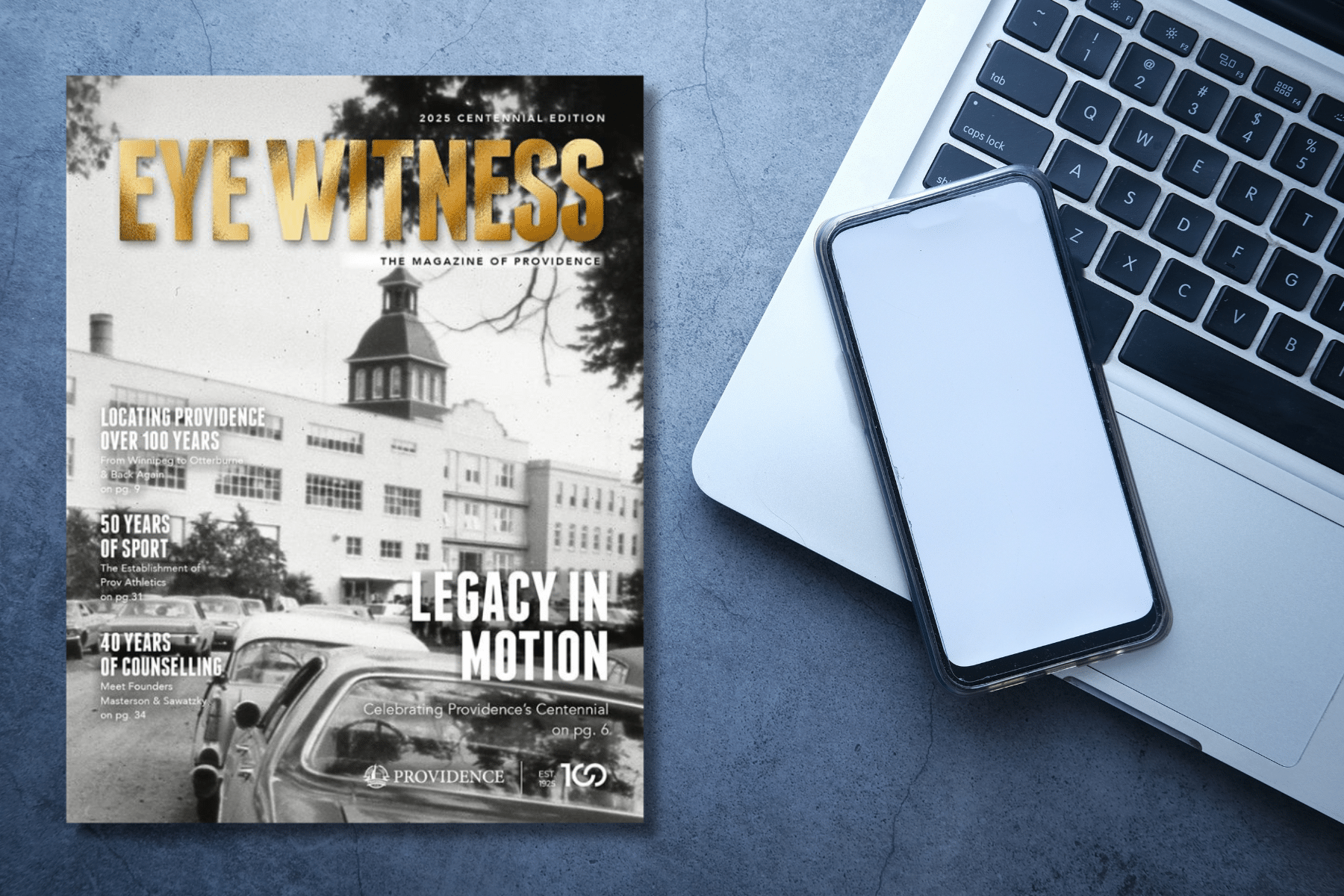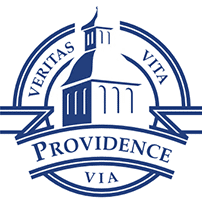The 2025 Centennial Edition of Providence’s Eye Witness magazine is now available online HERE, or in print on our Otterburne campus (near the Take Ten coffee shop in the Hanna Centre). Hear stories about the beginnings of various programs from the perspective of the founders themselves, trace the various locations that Providence has called “home” since 1925, and read about key figures from our history who were recognized at our “Distinguished Servant Award” ceremony at the RBC Convention Centre in Winnipeg.
A Century of Progression
There is a common assumption that the past is stationary and unchanging, as if there’s a permanence or fixed state to historical people, locations, and events. From the vantage point of the present – whether knowingly or unconsciously – it is supposed that life for others from years ago is reduceable to recorded words and still images, and that certain individuals or groups remained the same over time. However, given anyone’s experience of self-awareness, living is known to be dynamic and complex. Multiply this by everyone who ever existed, exists and who will exist, and what becomes clear is that the only constant is transformation; like a river, there is both continuity and constant motion.
Founded in 1925 as the Winnipeg Bible Training School, the institution has undergone much progress over a century. From performing several name changes, to occupying various sites and buildings, to launching new programs, to the countless students, faculty and staff who have learned and worked here throughout its 100 years, Providence is well familiar with change. Development, after all, is a key aspect not only of our earthly existence but of faith itself. While many across generations long for stability during uncertain circumstances, like George Bernard Shaw is remembered to have said: “Progress is impossible without change.” In other words, adaptation and growth is the mark of vitality, and this is an unmistakable feature of our history.
As with a growing family or church community, the space that’s needed to thrive as an organization changes given its participants, vision, and goals. When Providence first began, rented rooms in downtown Winnipeg homes and churches was sufficient – until acquiring its own land and property became a necessity due to increased student enrolment. Growth was what led to the purchase of Evergreen Place in 1947, the Otterburne Campus in 1970, and expanding back into Winnipeg through renting Winnipeg’s historic Massey Building starting in 2023.
An aim toward growth was also the motivating factor behind such initiatives as Providence’s Athletics department, the Seminary’s Counselling program, and the school’s Teaching English to Speakers of Other Languages (TESOL) degrees. At the time, founders of each project couldn’t anticipate how important each new initiative would be to progressing Providence’s mission. Yet, through passion and perseverance, these are examples of how the University College and Seminary remain devoted to pursuing innovative ways to transform people into leaders of character, knowledge, and faith.
What is in store for Providence in the years ahead? That remains to be seen. But regardless of the buildings that were opportunely provided and the programs that were pioneered over the past 100 years, it’s the legacy of the people who served and studied at each location that will endure.


